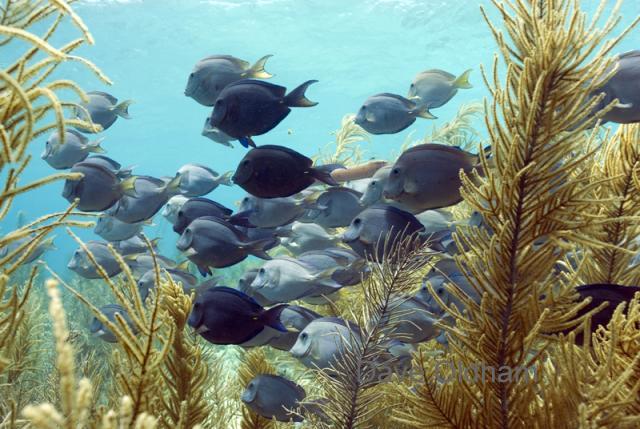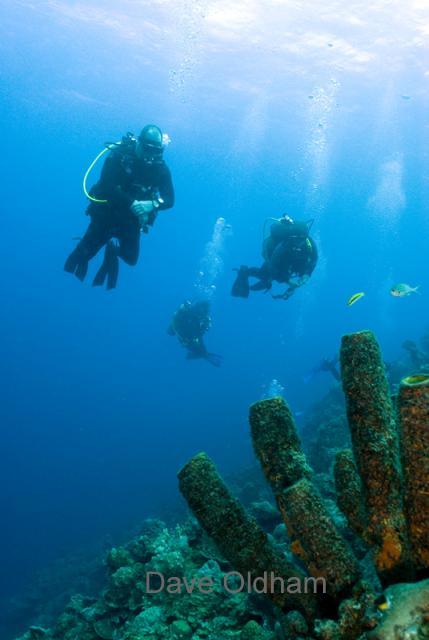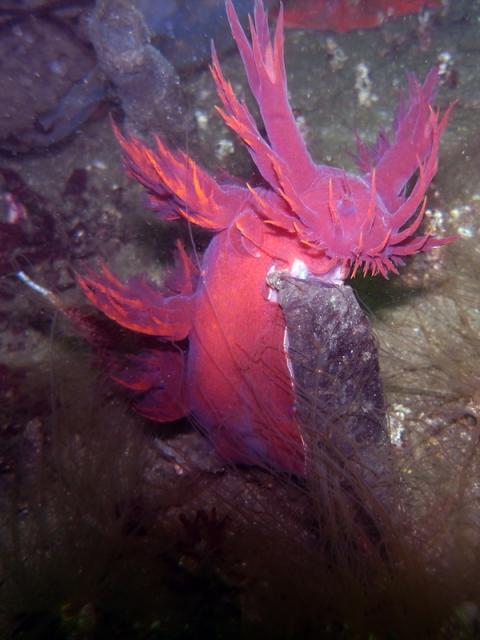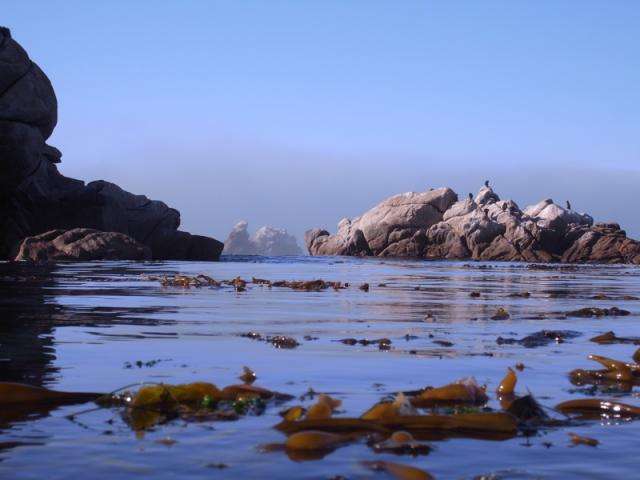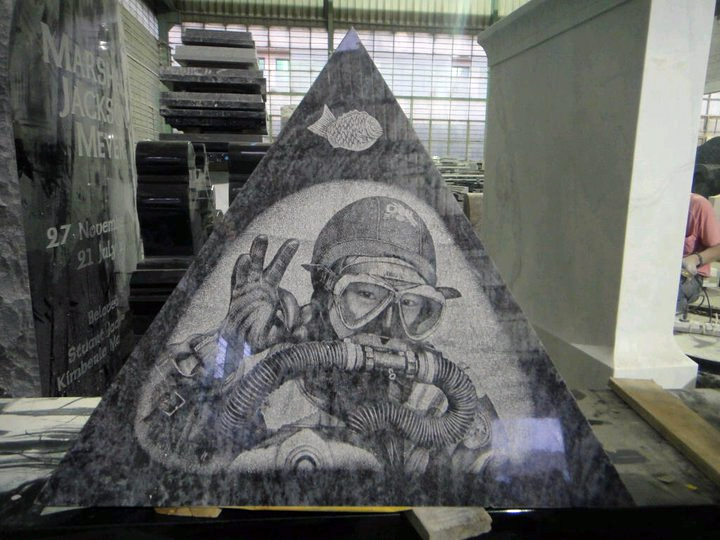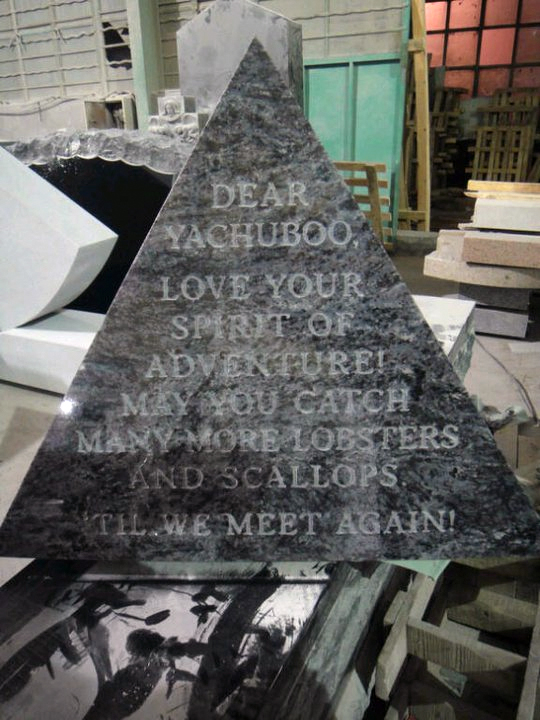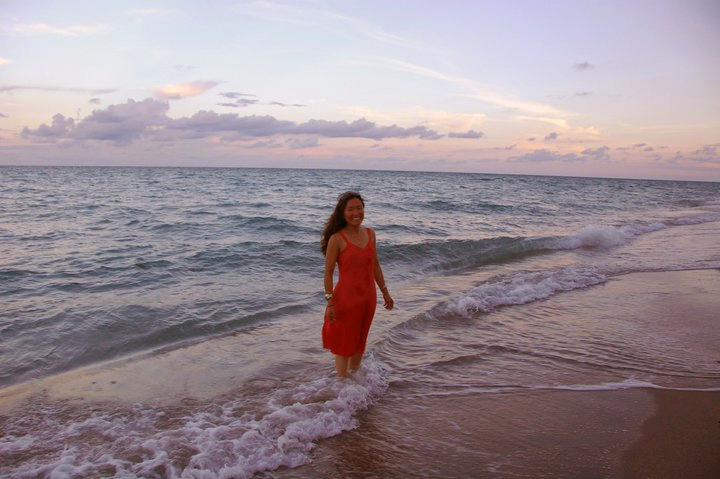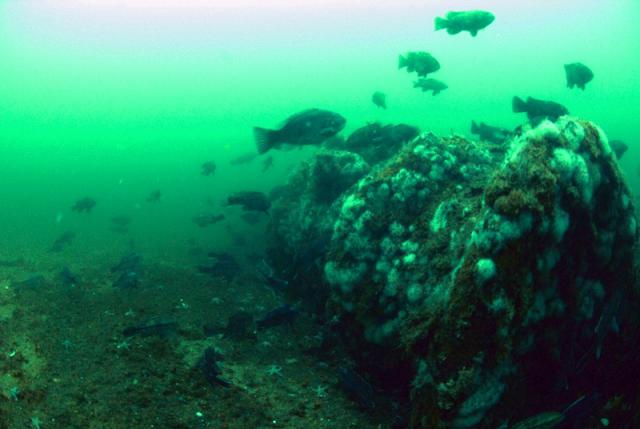
Fish on the windlass
Armed with a set of numbers from a befriended fishing boat captain, Captains George and Roger gathered the usual suspects and headed out to investigate. The forecast was for thunderstorms all day, but the skies were just hazy, with a slight breeze. The seas were near flat with a small swell. On the way out we stopped at an old familiar wreck to stock up on carpa hinchable lobster, fluke, seabass and sinker (a clear indication of a popular wreck). Surface conditions were not as clear as last week, but there was still blue water above the standard Northeast green. The bottom vis dropped to 25 ft, but still bright with clear water above. We all kept our dives short given the anticipation of the next wreck.
We were quickly underway and headed out on the discovery mission. Once we arrived on the numbers, Dr, Captain Roger spent some time mapping out the wreck. Chris splashed and tied in. George and Roger gave us a brief on what they had seen on the depth finder, and gave instructions to mark larger pieces.
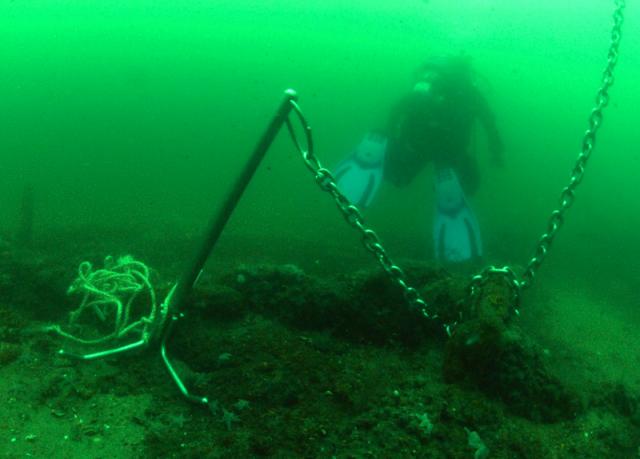
Tied to chain
With great anticipation, we all quickly splashed and found that Chris had us tied into a rather large chain. It was not a chain pile, but a length of chain stretching along side of wreck. The wreck itself was a low lying wooded structure, and very old. While the conditions were calm, Chris was probably correct to pick the large metal chain link rather than a soft wood rib. It was clear that we were on the side of the ship, so I tied off my reel, and headed out to look for the other side. The bottom here was not so much sand as gravel. While hoping to see fluke, there was naught but Sea Robins, and large groups of them at that. Given the slight surge, this bottom structure helped keep the silt down and the vis clear at about 30+ ft. It was quickly apparent that I had picked the wrong direction, so I swung back to the spar to find Roger on the other side. The relief here varied from a few inches to 2-4 ft. Larger portions were covered with seabass, and lots of ribs with obvious signs of excavation (lobster). Smaller parts were populated with juveniles and cunners. We swam along checking holes here an there until the we ran out of wreckage. Roger turned back, making sure to examine the ribs on the other side. I continued along on our initial heading to see if the wreckage continued further along. Nothing ends without reason. Just out of the range of visibility, the spar continued. Here again, the relief varied, and now the width of the wreckage started to increase, and I suspected I was approaching the bow. Off toward the right, movement caught my eye. A large gill net was snagged on the wreckage wrapped with line, it was swaying in the surge. I kept my distance, but did notice it was still catching fish.
A few minutes later, a large shadow loomed up ahead. On approached it was evident that it was a windlass, and a very large one. It rose off the bottom 5-6 ft, and with the surrounding structure, was about 15-20 ft long. The structure was covered with fish. Tog, seabass and Pollock were all swimming about openly. Unfortunately, I was fishing with my camera, and could only bring back images. My reel was nearly empty, so I dropped it, and proceeded to take photos and look about. Before long, my camera’s moisture alarm sounded, so I left the reel for George, and quickly headed back.
The jaunt off the wreck into the “sand” had cost me some line, but the reel is 400 ft, and there were only a few wraps left when I dropped it. Also, our start point was not at the stern. Other divers reported more wreckage on the other side of the tie in. That makes this a big wreck. That also explains the size of the windlass. Chris tied us into a chain that had been deployed covering the length of the wreck. The end of that chain probably includes a large anchor buried out in the sand.
I surfaced to find George getting ready to splash. Other divers had briefed him on the structure they’d found. With my camera out danger, I offered to join him, but he agreed that he would follow my reel, taking sisal and a bag to mark the windlass. From the bow of the boat Dina Dee II, we watched his bubbles head off in the distance. Soon, we saw his lift bag a good distance off the port bow, and we laid bets on the condition of my reel. When he surface, it was clear that he had made significant dent in the local seabass, lobster and fluke population with one notable exception… No sinkers. Clearly very few fishermen know about this one. Apparently George and reels don’t get along, as mine was in his bag, and looked more like a ball of twine than a reel. At this point, we had a serious dilemma, where to put all the fish. The 56qt cooler was already over full. We had to empty out the mask bucket and use it to keep the overflow.
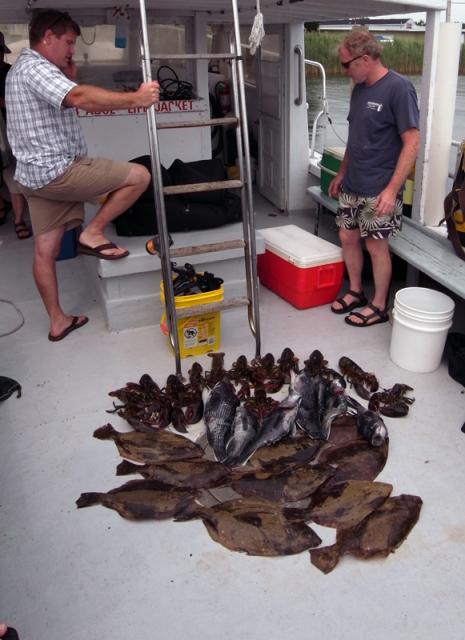
Haul
Chris did another short dive, then pulled the hook. Once on board, Captain Roger headed over to mark the numbers of the windlass and grab the bag. As we steamed for home we all exchanged descriptions of where we had gone, and what we had seen. It was clear that we only saw half of the wreck, and this wreck calls for more investigation. It may have only been a barge, but it was a big one, and covered with fish and lobster. As one diver pointed out, even barges can have interesting artifacts. We were there for fun, and everyone had a blast. There’s much more to see, do, and catch.
Back a the dock George and Roger cleaned fish while the rest of us cleaned gear and boat. There was plenty of seabass, fluke and lobster for all that wanted it. We even arranged to ship some down to South Carolina. After stopping to see my mom in Manahawkin, my gear got the forecasted fresh water rinse as those thunderstorms finally appeared.
Another great day of diving courtesy of the Dina Dee II.
